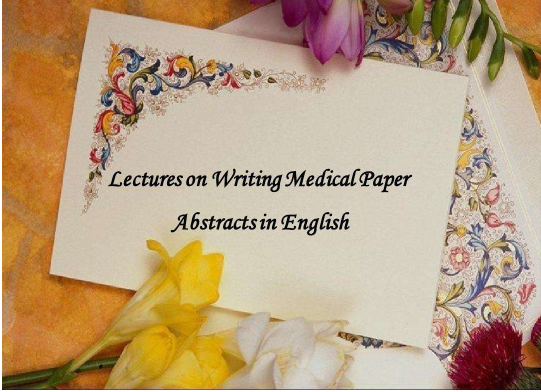对于很多毕业生来说,毕业论文并不陌生,然而论文摘要部分作为论文的首要位置,很多人都不清楚论文中英文摘要怎么写?下面学术堂整理了三篇英文摘要,告诉大家论文中英文摘要的格式规范,以此为鉴,欢迎阅读。

英文摘要一
论文题目:技术与电影艺术的发展
Abstract
Cinema is the latest and most young one of the great family of art.The others are regarded as a long history and even ancient, such aspainting, sculpture, dance, literature, music, and some appeared in theprimitive society, already have a brilliant achievement and a longtradition. There is no more than 120 years, since the appearing of cinemain the 1800s. However, cinema have developed rapidly and has become anew form of art (The Seventh Art) after music, poetry, dance, architecturepainting and sculpture. As The Seventh Art, cinema different from otherarts with some features, a principal one, it is the only one with a technicalinvention as the mark of emerging.We are in the age of advanced audiovisual, cinema, television,multimedia attract more and more attention of us. As a young art, movieshave a more intimate contact with the people's lives than many traditionalarts, which also makes the movie has become a hot research point today.People explained the existence and evolve of film since it's born by avariety of ways with so many research articles about art and technology.
However, the symbiotic relationship and interaction between art andtechnology (the two indivisible parts of movie ontology) has not beencompletely elucidated. The most involving articles are specific technicaland skills issues, and technology and skills are often considered “lack” oftheory. When comes to technology and the movie, it is more elaboratingdigital technology and ignoring other performance skills and means in theliterature after the 1990s.Hereinvestigated thetechnology. Thisdevelopment of film artperspectmearticle focused on thefromimpactdevelopment of film art technology, strived to understand and grasp theinteraction between art and film, and explained that the demand of artstimulated the invention of new technologies in a certain extent, thedevelopment of technology promoted the art to a more advanced stage.
This paper is divided into three parts.
Part I: Preface. Description and assessment of the status of thecurrent academic technology and film studies. Collating and reviewingthe achievements and deficiencies of research about the impact oftechnology on the film, pointing out the significance, methods, contentand innovation of this study.
Part II: Chapter 1一6. The related concepts were introduced briefly atfirst, and then the impact of technological development for China FilmArt was discussed from five major technical perspective.
Chapter 1:Technology and movies. The definition of filmtechnology was defined clearly, the significant meaning and impact offilm technology for arts were pointed out by Description the history offilm. In addition, analyzed from the perspective of the creators of the film,the reason why film art showing a rich artistic effect and art expressive isthat creator of the film have different choices and actions abouttechnology.
Chapter 2: The birth of cinema. Elements of traditional art similar tothe art of film was recalling at first, such as lantern, shadow, painting, andthen the relationship of these early art and film was explained. After that,the birth of film created by the development of technology was discussed,like the birth of photography, photography and the invention of theprojector. At last, the paper introduces the similarities and differencesbetween the film art and other arts (such as drama, painting, fiction), andbriefly discusses the main features of the film art.
Chapter 3:Wonderful sound. This chapter selected four stages fromsilent to sound experienced: wax disc sound, film sound, magneticrecording and digital stereo. Firstly, the effect of the improvement of filmand photofinishing technologies to the development of film wasintroduced, and the aesthetic characteristics of silent film wassummarized. And then, the changes of narration and other aspects of filmcaused by adding voice and unique aesthetic features of sound film werediscussed. Finally, the impact of the development of digital soundtechnology on the film was analyzed.
Chapter 4: The colors. The usage of toner France and othertechnology in movie technology before color film appearing and themovie development situation at that technical conditions were introduced.And the aesthetic characteristics of early color film was analyzed. Theimpact of changes of light effects and adjust of color on development offilm and the unique aesthetic characteristics of color film after the birth ofcolor film were analyzed. Finally, the application of digital technology interms of color film was discussed.
Chapter 5:Deformation screen. It was reviewed that there are twocommon image frame rate, one is 1.33:1(silent), and the other one is 1.37:1 (35mm sound film “standard frame than the”) before the appearing ofwidescreen movies. The impact of the solution of anamorphic lenstechnology problems on wide-screen image quality was discoursed, andthe changes on composition of film art and other aspects brought bywide-screen was analyzed. Then three-dimensional cinema wasintroduced in this chapter. The technical support of three-dimensionalfilm was analyzed, and the aesthetic characteristics of three-dimensionalmovies was explored. Finally, 360 degree movie screen, IMAX domemovies and other large-screen movie were introduced.
Chapter 6: Crazy digit. For traditional film movies, cameras art(movies) under film technology was analyzed from change of film anddevelopment of camera. Then the impact of digitaltechnology ontraditional film. Finally, the ultra-realistic movie experience and theimpact of digital technology on film texts, films and film body acceptancebrought by digital technology were explored.
Part III, Epilogue: Effect of narrative film art, nature, etc. producedby the development of technology, and enhancement of pursuit aboutSense on technology of film were summarized. Analysis by claims ofsome anti-technology school and now some movies too much emphasison the status of technology, it was concluded that technology stacking isnot the film's nature, and technology content is not the pursue goals offilm also. For the film, the technology is only a means to show its artisticexpression, so technology should not be highlighted too much, they arecomplementary, mutually beneficial conclusion. In other words, therenewal of technology pushes the development of film art, and the pursuitof art promotes the progress of technology.





